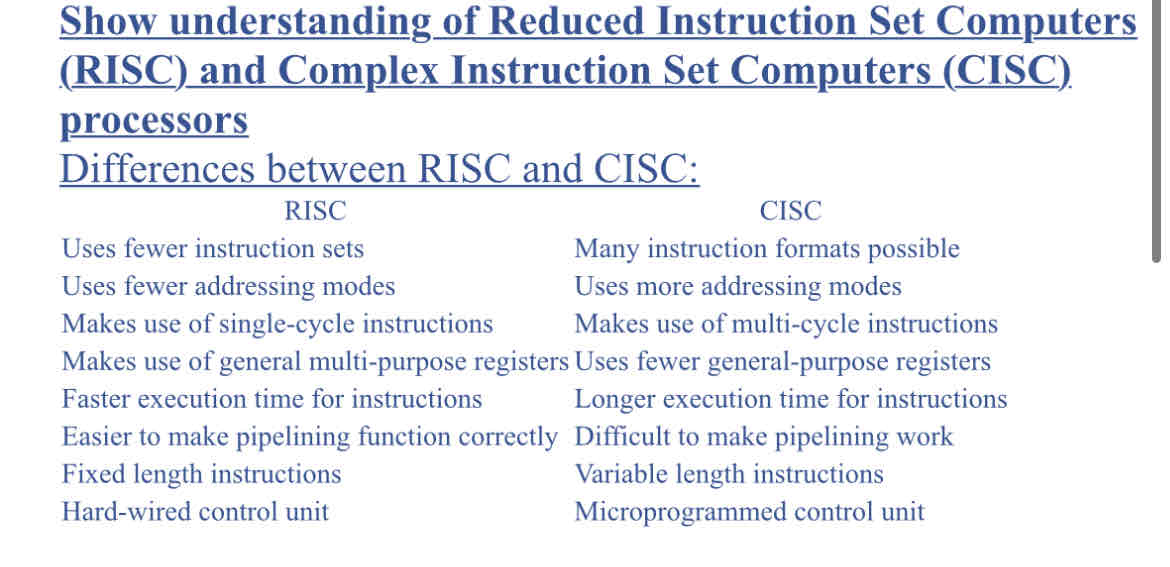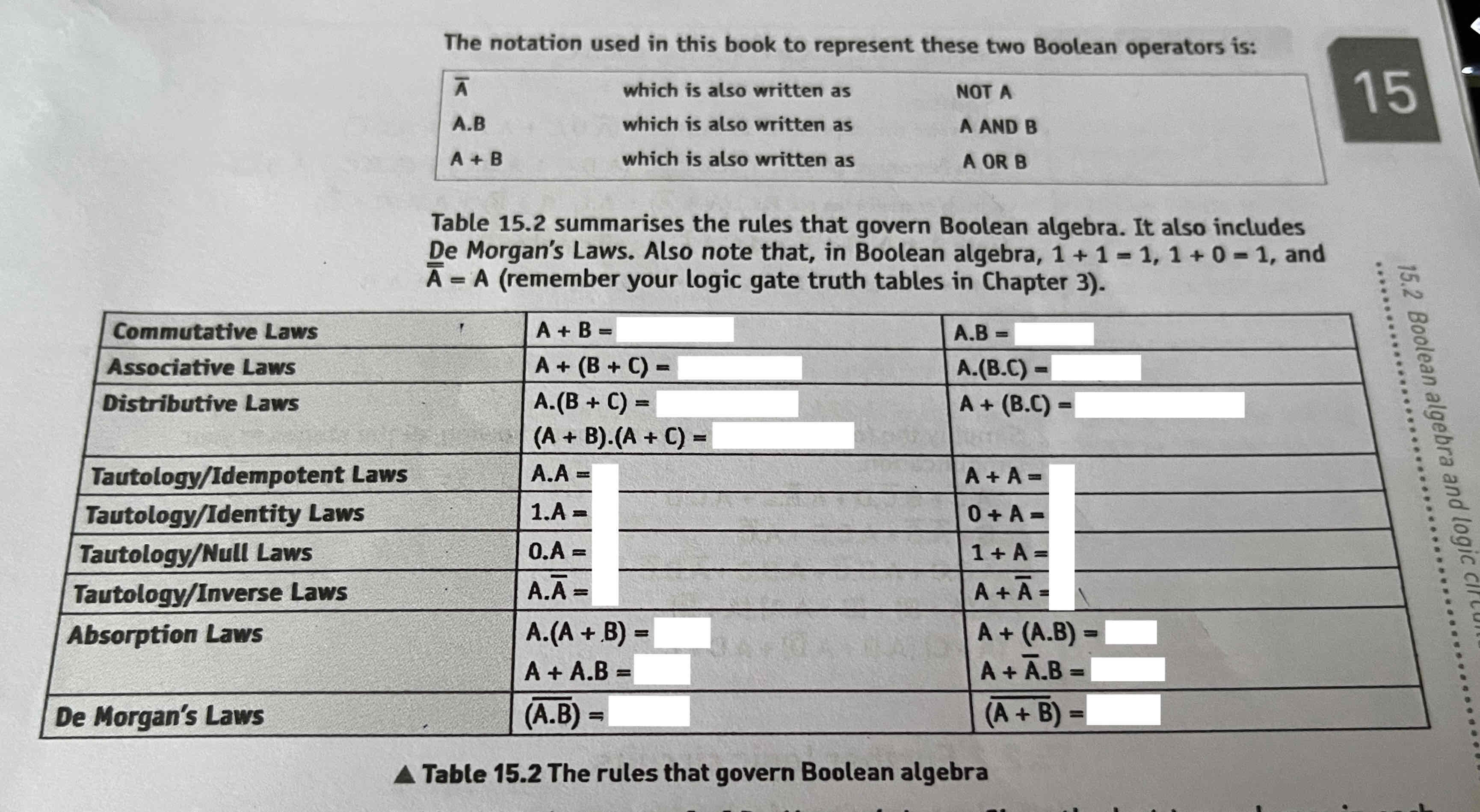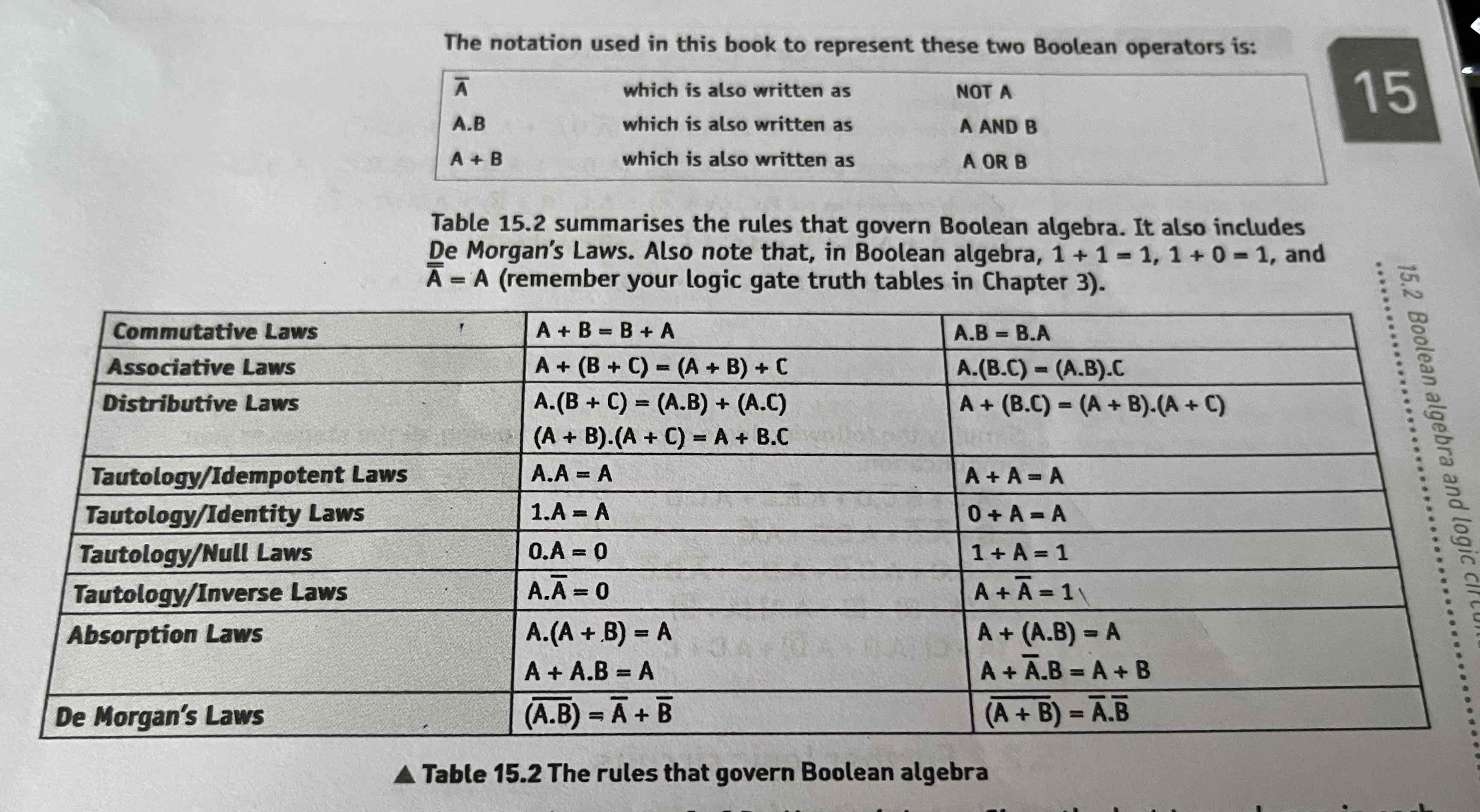CSI CHAP 15: HARDWARE AND VIRTUAL MACHINES
1/18
There's no tags or description
Looks like no tags are added yet.
Name | Mastery | Learn | Test | Matching | Spaced |
|---|
No study sessions yet.
19 Terms
What are the differences between RISC and CISC? (8)
image

How does interrupt handling work on RISC and CISC processors?
As soon as the interrupt is detected, the current processes are paused and moved into registers
the ISR is loaded onto the pipeline and is executed
When the interrupt has been serviced, the paused processes are resumed by bringing them back from the registers to the pipeline
What is the use of pipelining?
allows several instructions to be processed simultaneously
thus, increasing the number of instructions completed per unit time
describe the process of pipelining during the F-E cycle in RISC processors. (4)
instructions are divided into ___ stages: (name them)
…
…
…
instructions are divided into 5 stages:
Instruction Fetch (IF)
Instruction Decode (ID)
Operand Fetch (OF)
Instruction Execute (IE)
Write Back Result (WBR)
Each subtask is completed during one clock cycle
No two instructions can execute their same stage at the same clock cycle
the second instruction begins in the second clock cycle, while the first instruction has moved on to its second subtask
What is the use of the registers in RISC processors?
pipelining requires processors with several registers to store each of the stages
What are the four basic computer architectures?
SISD
SIMD
MISD
MIMD
Describe SISD (3)
single instruction, single data architecture
contains one processor, a control unit and a memory unit
that executes instructions sequentially
describe SIMD
single instruction, multiple data architecture
the instructions can be performed sequentially, taking advantage of pipelining
parallel computers with multiple processors
describe MISD (3)
multiple instruction, single data architecture
each processor works on the same data stream independently
parallel computers with multiple processors
describe MIMD (3)
multiple instruction, multiple data architecture
contains many processors
that operate independently
What are the characteristics of massively parallel computers? (4)
A large number of separate computers connected together
simultaneously performing a set of coordinated computations
the computers communicate by sending messages
network infrastructure: forming one machine with several thousand processors
What is a virtual machine?
emulation of a computer system using a host computer system
Give examples of the role of virtual machines (2)
used by companies wishing to use the legacy software on newer hardware and server consolidation companies
virtualizing machines allows developers to test applications on many systems without making expensive hardware purchases
what are the benefits of virtual machines? (3)
security benefits
allows more than one operating system to run on a system
allows multiple copies of the same operating system
what are the limitations of virtual machines? (3)
affected by any weaknesses of the host machine
costly
time and effort needed for implementation is high
What are the benefits of karnaugh maps?
minimizes the number of boolean expressions
minimizes the number of logic gates used, thus providing a more efficient circuit
What is the role of flip flops as data storage elements?
flip flops can store a single bit of data as 1 or 0
computers use bits to store data
flip-flops can be used to store bits of data
memory can be created from flip-flops
What is A (with a horizontal line on top)?
What is A.B?
What is A+B?
NOT A
A AND B
A OR B

Fill the table.
image
